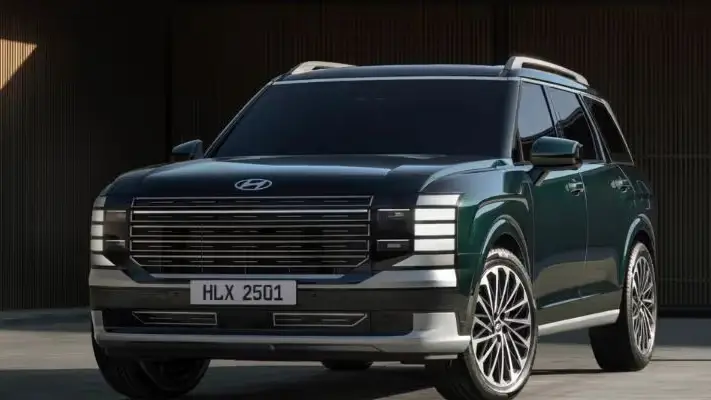- Why Consider Changing Your Car?
- Your Step-by-Step Guide to Changing Cars
- Mistakes to Avoid While Changing Cars
- Picking the Right New Car
- After the Switch: Post-Sale Essentials
- FAQ
Switching cars is a significant decision that requires careful consideration. Whether you are upgrading to a vehicle with better features, transitioning to an electric model, or simply looking for something that matches your changing lifestyle, this guide will give you all the necessary tools to make the process seamless and stress-free. Let’s dive in to explore everything you need to know about how to change cars successfully.

Why Consider Changing Your Car?
Changing your car is not just about acquiring a shiny, new model. It often connects to practical and financial decisions. Here are some of the main reasons people decide to make the switch:
Upgraded Technology: Today’s vehicles come with advanced safety systems, better fuel efficiency, and smarter infotainment systems.
Safety Concerns: Over time, wear and tear can reduce the reliability of older cars, potentially putting your family at risk.
Cost Efficiency: A newer car often provides better mileage and reduced maintenance costs, balancing the higher initial investment.
Lifestyle Changes: Family expansion, relocation, or job changes may require a larger car, SUV, or a fuel-efficient model.
Environmental Awareness: With electric and hybrid cars becoming accessible, switching to eco-friendly models can significantly reduce your carbon footprint.

Your Step-by-Step Guide to Changing Cars
Step 1: Assess Your Current Car’s Value
Before switching, understanding your current car’s value is critical. This impacts your budget and helps you determine whether a trade-in, resale, or dealership upgrade makes sense. Follow these actions:
Use online platforms or valuation tools to estimate your car’s worth.
Check its mileage, condition, and service history, as these factors significantly influence resale value.
Conduct minor fixes and a thorough cleaning to improve its appeal.
Step 2: Plan Your Budget and Financing Options
Determine how much you can allocate for the new car. Consider other related expenses such as:
Down payment for high-end models.
Monthly installments, if financing.
Fees for registration, insurance, or transferring plates.
Long-term savings from choosing a fuel- or energy-efficient vehicle.
Step 3: Research Options for Your New Car
Choosing the right car requires careful evaluation of your driving needs and preferences. Compare models based on:
Fuel economy.
Space for your family or cargo.
Safety ratings from independent assessments.
Latest technology features, such as adaptive cruise control or parking assist.
The overall price and maintenance cost over the next five years.
Step 4: Arrange a Test Drive
Never skip the test drive phase. It allows you to experience the car’s handling, comfort, and performance firsthand and identify any potential concerns. During the drive:
Evaluate responsiveness and braking.
Check visibility, seating comfort, and driving ergonomics.
Test the infotainment and connectivity systems.
Step 5: Negotiate the Best Deal
Negotiate with dealers for better trade-in values or discounted pricing on the new car. If necessary, obtain quotes from multiple dealerships to create competition.
Step 6: Sell or Trade-In Your Old Car
Choose the best method based on convenience and financial benefits:
Trade-In: Offers quick swapping but may give a lower price.
Private Sale: Fetches a higher price, but it demands more time and effort.
Dealership Sales: Simplifies the process, but the offered price could be comparatively lower.
Step 7: Complete Documentation
Ensure all paperwork is in order, including title transfer, car insurance, and registration updates. Keep copies for your records.

Mistakes to Avoid While Changing Cars
Switching cars can become a frustrating experience if common mistakes are not avoided. Watch out for:
Rushing the Research Phase: Without proper research, you may miss better options or deals.
Neglecting Total Ownership Costs: Taxes, insurance hikes, and fuel/maintenance costs are often overlooked.
Skipping Repairs: Minor issues with your old car could lower its resale value.
Picking the Right New Car
Finding a car that fits your budget and lifestyle is key. Consider the following:
If you drive long distances, prioritize cars with better mileage.
If family comfort is important, choose SUVs or minivans with spacious interiors.
If you live in urban settings with traffics, opt for compact models.
Tips:
Check reviews from both experts and owners on car reliability.
Compare electric and gasoline cars based on infrastructure availability and costs in your locality.
After the Switch: Post-Sale Essentials
Once you’ve changed your car, a few important steps remain:
Inform your insurance provider and transfer your policy to the new car.
Update your vehicle registration and ensure every detail is accurate.
Read the owner’s manual to get familiar with car systems.
Schedule regular maintenance checks to keep the car in optimal condition.
FAQ
Q: How do I know it’s time to switch cars?
A: When frequent repairs outpace the car’s value or it no longer meets your lifestyle needs, it’s time to consider switching.
Q: Will cleaning my old car increase its resale price?
A: Yes, a well-maintained car creates a positive first impression. Clean interiors and polished exteriors can increase its appeal to buyers or dealers.
Q: Is electric always better than gasoline?
A: It depends on your location, charging infrastructure, and commute distance. Analyze ongoing energy costs compared to fuel prices in your area.
Q: Can negotiating with dealers reduce costs significantly?
A: Absolutely. Compare dealer offers and don’t hesitate to walk away. Negotiation often leads to waived fees or reduced prices.
Q: What should I prioritize during a car switch?
A: Balancing costs and requirements like safety, fuel economy, and comfort are critical to achieve a satisfactory car change experience.
Read More:
Car Installment Without Bank: Your 2025 Financing Options













